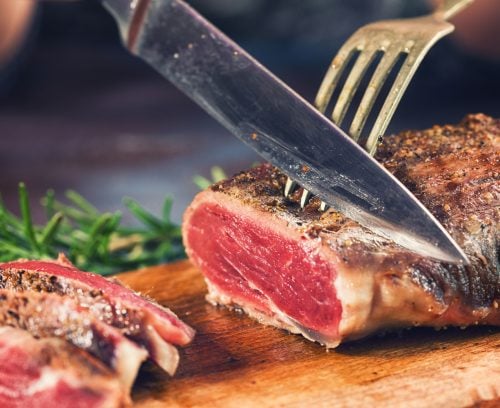
What do rule changes about serving rare meat mean for steak lovers? Gwendoline Keel and Ciska de Rijk, food law specialists at Simpson Grierson, find out.
Restaurant and café owners have been up in arms about new Ministry for Primary Industries (MPI) food safety guidelines. They say the guidelines effectively ban them from serving medium to rare meat.
These guidelines specifically state that high-risk meat, such as minced meat and liver, is to be cooked at higher temperatures for a longer period than previously required, to avoid contamination. Chefs say this basically means that burgers cannot be served medium-rare as the patties have to be cooked so that the internal temperature reaches 75°C, which is the temperature for a well-done patty.
So is it illegal to serve rare meat now?
Under the guidelines, there are different criteria applied to different meats, based on their perceived level of safety risk. For example, it is okay to serve a rare steak, as bacteria on the surface of a piece of meat are killed during the searing process.
But minced or ground meat is not considered totally safe as searing won’t kill all the bacteria found in a patty. This is because bacteria found on the surface of meat is spread throughout the entire product during the mincing process.
Likewise, liver is not considered totally safe as the campylobacter bacteria can be found on both the outer surface and within the inside of the liver. Liver requires longer cooking times to reduce the risk of infection before eating.
It’s not officially against the law to serve rare meat but there are a number of factors that could see the MPI’s new guidelines having the effect of law.
The guidelines have been developed to ensure that food that is traded (this includes being sold or given away as part of a promotion) is ‘safe and suitable to consume’, as required under our food law regime.
Food businesses are required to demonstrate their foods’ ‘safeness and suitability’ through food control plans or national programmes. These are documents that show how the food business intends to manage its operations and control the quality and safety of its food product.
Therefore, the guidelines may have the effect of requiring food businesses to address cooking temperatures for high-risk meats through food control plans or national programmes, in order to demonstrate safeness and suitability for consumption.
What’s next?
The MPI continues to provide guidelines and templates on food safety processes and cooking procedures for food businesses to assist them in complying with the legal requirement to ensure the safety and suitability of their food.
It has developed specialist sections in its templates to specifically allow the safe cooking of medium-rare minced meat and other high-risk specialities, such as beef tartare.
www.healthyfood.com










